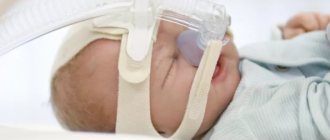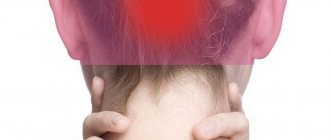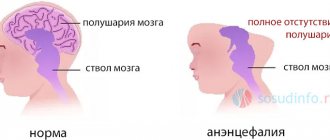What is cerebral palsy
Cerebral palsy (CP) is a pathology affecting the musculoskeletal system. The disease occurs due to damage to certain areas of the brain when they are not fully developed. Some patients are very afraid of such a diagnosis, so they ask the question: can cerebral palsy be detected during pregnancy by ultrasound?
It is necessary to understand the characteristics of the disease and the reasons that cause it. This is what we will do.
This disease has characteristic features - the child has serious disturbances in the coordination system, and the vertebral column, lower and upper extremities also suffer. Muscular structures are affected to the extent that brain volumes are affected.
Unfortunately, dysfunction of the musculoskeletal system is not the only thing that distinguishes cerebral palsy from other diseases.
The following pathologies may occur against the background of brain damage:
- deterioration of vision and hearing;
- lack of normal speech ability;
- frequent attacks of epilepsy and convulsions
- mental development disorder; mental retardation;
- lack of understanding of what is happening around;
- difficulty breathing;
- uncontrolled processes of urination and defecation.
Cerebral palsy does not progress with age. A targeted lesion of the brain does not spread to new tissue.
Before answering the question of whether cerebral palsy is visible on ultrasound during pregnancy, it should be noted that the occurrence of pathology is not associated with incorrect actions of obstetricians or any mistakes of the woman.
Myths and real factors when diagnosing autism during pregnancy
There are many rumors about what influences the development of ASD. However, not all of them are justified. And often because of this, expectant mothers can harm the fetus.
| Influence of factors on the development of ASD | |
| Age | The mother's age is too early or late. |
| Infections | Chickenpox, measles, etc. |
| Vitamin deficiency | A lack of vitamin D, folic acid and Omega-3 can have a negative impact. |
| Complications during pregnancy | Causes fetal hypoxia. |
| Vaccination | No direct effect was observed. |
| Obesity and diabetes | There is no relationship. |
| Heavy metals in food | Mercury and lead may be affected. |
It is also not known whether autism can be recognized during pregnancy after assisted reproductive technologies are used. Most likely, there is no direct connection between the disease and the methods.
Thus, we cannot accurately determine whether a child has autism before birth. Reviews from mothers also testify to this. After all, most of those who received dire prognoses eventually gave birth to healthy children.
Why does it occur
There are several versions that cause such a terrible disease in children. Below we will look at each of the reasons.
Hypoxia
Some areas of the baby's brain may suffer from a lack of oxygen. This happens with various complications, which include circulatory disorders, changes in the umbilical cord, fetoplacental insufficiency and other pathologies.
Hypoxia causes damage to the nervous system of the unborn child, and reflexes are formed incorrectly. The baby cannot keep his balance. The muscles are unbalanced, motor activity is impaired.
Injuries
In case of difficult childbirth, injuries are also possible. They occur during rapid labor or, on the contrary, during prolonged labor. If labor is sluggish, then serious problems can also arise.
Fetal pathologies
The baby may lie feet first, making it difficult for him to pass through the birth canal normally.
Oligohydramnios, high fetal weight, as well as prematurity are factors due to which, in the future, the child’s health is at risk.
Diseases and characteristics of women
When giving birth to a child after the age of 30-35, a woman is at risk. But things don't always end in problems. Patients in the older age group are more likely than others to ask the question whether cerebral palsy can be determined during pregnancy by ultrasound.
A narrow pelvis, small size of the uterus and childbirth later than the specified date lead to complications. This also includes toxicosis in the later stages.
Chronic diseases of a woman also affect possible abnormalities in the child. We are talking about hypertension, obesity, endocrine and cardiovascular pathologies. Taking medications always affects the child’s health.
An unhealthy lifestyle increases the risk of having a sick baby. These include trauma, emotional overload, drug, nicotine and alcohol addiction.
Premature birth
The lower the child’s weight after birth, the more abnormalities are detected. Everything is connected with the immaturity of organs and systems; they cannot cope with their work. Modern medicine is on guard for such cases, so there is no reason to worry ahead of schedule.
Main symptoms
- Problems arise when breastfeeding - the baby has difficulty swallowing, choking.
- The child is anxious and sleeps poorly.
- At the age of one month, the baby does not react to loud noises.
- At two months of age, the baby does not smile or coo.
- Belatedly, he begins to hold his head up, roll over, crawl, sit, and walk.
- The baby does not want to lie on his tummy.
- At four months of age, the baby does not turn his head to the place where the sound is coming from.
- Doesn't try to reach the rattle he sees.
- You may notice repetitive movements made by the arms, legs and head. In general, the child moves suddenly and impetuously, or, on the contrary, slowly and inhibited.
- Freezes, taking one pose.
- The baby lies in uncomfortable and unnatural positions.
- If you take him by the tummy, he sharply tightens or straightens his legs.
- When spreading the baby's legs to the sides and turning his head, you feel resistance from the muscles, because they are either very tight or flaccid.
- The baby constantly moves one arm, and the other at this time can be tense and pressed tightly to the body.
- There is asymmetry of the body, manifested in different sizes of limbs and muscle tone. One arm can be tense and the other relaxed.
- Convulsions and tremors may occur.
- Upon visual examination, there are no folds under the buttocks. And if there is, then, like on the legs, they are asymmetrical. The lumbar curve of the spine is not pronounced.
Is it visible on ultrasound?
It is impossible to reliably determine cerebral palsy using ultrasound during pregnancy. Only the combination of all the above factors allows us to assume possible violations.
Note that this also includes Rh conflict. Against this background, hemolytic disease may develop. And then severe jaundice occurs. The baby is vomiting, may have convulsions, and his general condition is impaired. The sucking reflex is not developed. As a result, the nervous system suffers, which will adversely affect the further development of the child.
Now you know whether it is possible to determine cerebral palsy during pregnancy by ultrasound. No one will give an exact guarantee. The pathology may not be noticed. In addition, heredity is important. And the above factors are just a part. In fact, there are many more of them. Conventionally, the reasons can be divided into two groups - postpartum and birth.
The diagnosis of cerebral palsy is not made during pregnancy, but after childbirth some time later. Usually by two years it becomes clear. But even earlier, parents will see that something is wrong with the child. He will be developmentally delayed. If the impairments are severe, the child will not be able to sit or walk, which will certainly become noticeable before two years of age.
Additional diagnostics
In order to suggest the presence of cerebral palsy in the fetus, additional studies are carried out.
In addition to ultrasound scanning, it may be necessary to determine the heart rate and the activity of the contractile function of the uterus. Tests are also performed to help correlate movements with cardiac activity. Blood flow in the fetal vessels is important, as is electrocardiography.
Thanks to these studies, it is possible to notice hypoxia in time and take measures to reduce the risk of cerebral palsy due to lack of oxygen. By the way, hypoxia is a dangerous condition that leads to a variety of adverse consequences. Although cerebral palsy is not visible on an ultrasound during pregnancy, oxygen starvation can be determined using the above studies.
Serious brain pathologies will be visible on ultrasound scans. Often, no obvious abnormalities are found, and after the birth of the child, based on its development, it becomes clear whether there is paralysis or not. The diagnosis will be made by a neonatologist in conjunction with a neurologist.
Causes and risk factors for the development of cerebral palsy. The occurrence of cerebral palsy during pregnancy
Causes of cerebral palsy after the birth of a child
After birth, in the first years of a child’s life, certain circumstances can create a threat of cerebral palsy.
According to statistics, this is 5-10% of all cases. Why is this happening? 1. Severe jaundice.
The reason for the specific coloration of the skin in jaundice is an increase in bilirubin. When this increase is several times higher than normal and jaundice is not treated properly, bilirubin can cause irreparable harm to the developing brain. Most often, severe jaundice leads to a dyskinetic form of cerebral palsy.
2. Acute cerebral circulatory disorder
Usually this situation occurs due to concomitant diseases, which are not always possible to detect in time. Such diseases include abnormal development of cerebral vessels, heart defects, and blood diseases. In this case, there is a risk of developing cerebral palsy due to hemorrhage in the brain, which can even happen spontaneously.
3. Brain injury
Injury to a child's brain (such as from a fall or car accident) can result in symptoms consistent with cerebral palsy.
4. Infectious disease of the child’s brain
Bacterial meningitis and viral encephalitis are infectious diseases that affect the brain. They can cause delayed motor and mental development and even loss of already acquired skills.
Risk factors for the development of cerebral palsy after the birth of a child:
1. Different Rh factor or blood type in the mother and child (see here). 2.2.
Lack of child vaccination. . Many infectious diseases that can lead to inflammation of the brain and its membranes (meningococcal infection, tuberculosis, polio, measles) can be prevented by creating active immunity through vaccination.
3. Diseases of the child's blood.
Some rare blood diseases, such as thrombophilia or sickle cell anemia, can cause acute cerebral circulatory problems. This dangerous condition is the first signal of a disease, which, unfortunately, is not always possible to suspect.
4. Insufficient prevention of childhood injuries
Even an ordinary everyday situation can cause a traumatic head injury, which is dangerous for the developing brain. Therefore, you need to remember that failure to use car seats when transporting a child, high changing tables and the absence of barriers in the crib can lead to serious injury.
It is worth noting that it is difficult, and sometimes even impossible, to determine the exact cause of the birth of a child with cerebral palsy, as well as the time of onset of the disease. The causes and risk factors given above do not necessarily act separately; they can be combined, which causes each individual clinical picture.
Is it possible to detect cerebral palsy in the first year of a child’s life?
Doctors generally diagnose children between 12 and 24 months of age. However, even if it is impossible to determine cerebral palsy before this period, with the help of a detailed neurological examination and the latest diagnostic methods, already in the first months of life it is possible to determine the risk of developing the disease and begin treatment of the child.
There is no need to despair because your child is suspected of having cerebral palsy. The sooner you know about the possibility of pathology, the faster you can take measures to improve the health, motor and psycho-speech development of the baby.









